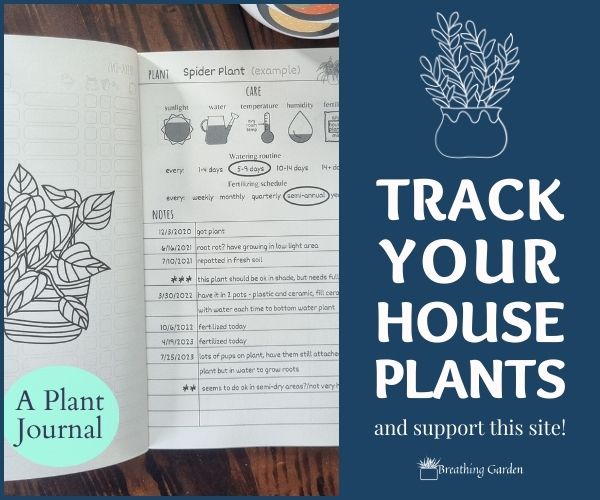If you’re like me, then you probably have an aloe plant (or two) around your house. Aloe plants are so popular because they are easy to care for and they have a lot of medicinal properties. But one of the most common issues to have is an overwatered aloe plant!
*This post may include affiliate links. When you purchase items from these links, we will receive a small commission, at no extra cost to you, to help support this website. Thank you for your support! Read more ->
In this post, we will discuss the signs and symptoms of an overwatered aloe plant, what an overwatered aloe plant looks like, how to save your overwatered aloe plant, and how to keep the plant from being overwatered in future.
Signs of an Overwatered Aloe Plant
So, what does an overwatered aloe plant look like? I unfortunately have first hand experience with an overwatered aloe plant. I bought my aloe off of a clearance rack because it already wasn’t doing very well and I thought I could save it. And then I accidentally watered it too much! So it just made the problems worse. Now, thankfully, I have happy and healthy aloe plants.
What Does An Overwatered Aloe Plant Looks Like?
-The leaves are wilted and soft
-The leaves are yellow or brown (this is a sign of root rot)
-There is mold on the soil
-The plant is drooping
-The soil feels soggy to the touch
If you see any of these signs, then it’s likely your aloe plant is overwatered, or has other issues going on.

You’ll be able to tell it’s been overwatered)
The definitive signs that I had an overwatered aloe, rather than a sunburnt aloe or underwatered, was that the water felt soggy without watering for a month. And there was mold growing on the soil. Which is not something you want in the house!
These are good tell-tale signs that you’ve got too much water causing the problems. So let’s go into how to save an overwatered aloe plant!
Saving Your Overwatered Aloe Vera Plant
This is very similar to saving an overwatered jade plant, since they’re both succulents. And how to save your aloe plant depends on how overwatered it is, and how long it’s been sitting in wet soil.
Minor Overwatering Saving
If it hasn’t been that long since you’ve noticed your aloe plant looking droopy and overwatered, try a simple fix. Make sure your plant is in a warm and fairly sunny spot, and don’t water your plant! Wait to water your plant for at least 2 weeks, likely longer.
If your pot doesn’t have a drainage hole, try tipping the plant sideways over the sink to release some of the water if you can. Again, hold off on watering your aloe until the soil feels very dry to the touch.
Keep checking the soil, and see if it’s getting drier over the next few weeks. If it’s not, or your plant is too far gone to let it dry out on its own, then you’re going to have to repot your plant.
Saving An Extremely Overwatered Aloe

If your aloe plant is too far past just letting the soil dry out on it’s own, you will need to repot it.
Items you’ll need when repotting: a pot (it can be the same that you’ve had it in, but dry it out first if you can), fresh well draining soil, and clean scissors or pruning shears.
Shop for these items on Amazon: terracotta pot, succulent soil, pruning shears, gloves
With the pot – try to make sure it’s one that’s terracotta to help release water and ideally have a drainage hole. If your pot doesn’t have a drainage hole, add in a layer of pebbles to allow excess water to leave the soil.
—
Start by removing your aloe from the pot as gently as you can. Make sure you’re wearing gloves when you do this.
Next, remove as much soil as possible from the roots and plant. Try to get your plant to where there are just roots and aloe leaves.
Once you’ve gotten rid of most of the soil, and can see the roots, it’s time to remove any dead roots (caused by root rot). Cut these away with your scissors or pruning shears. You’ll be able to tell the roots are dead because they’ll be mushy, black, and potentially smelly. Healthy roots will be thick, firm, and brown/white.
After you’ve removed all the dead roots, it’s time to repot your aloe into fresh soil. Be sure to use well draining potting mix for succulents. DO NOT WATER YOUR ALOE OR DAMPEN THE SOIL.
Refrain from watering your aloe plant for at least 2 weeks, if not more. Put it in a spot that is partially sunny so as to not overwhelm the plant with too much sun.
Keeping Your Aloe Plant From Being Overwatered
For future watering, here’s how I keep my aloe plant from getting too much water:
- Check the soil with a finger to see if it’s damp or moist. If it is – don’t water it.
- Water more often in the summer than in winter
- Aloe only needs to be watered every other week, at most.
- My favorite trick/tip: if it’s a small enough plant in a pot, start picking it up regularly. Then you’ll be able to get a feel for how it weighs when wet or dry. And you can just pick it up and see if it’s light or heavy – if it’s heavy, it doesn’t need water!
I hope this helps and that you will soon have a healthy aloe plant once again!



